Magic in A Song of Ice and Fire
This article is a part of College English Band 3 presentation. Reference only. Please do NOT copy.
An introduction of this article can be found at semester ends.
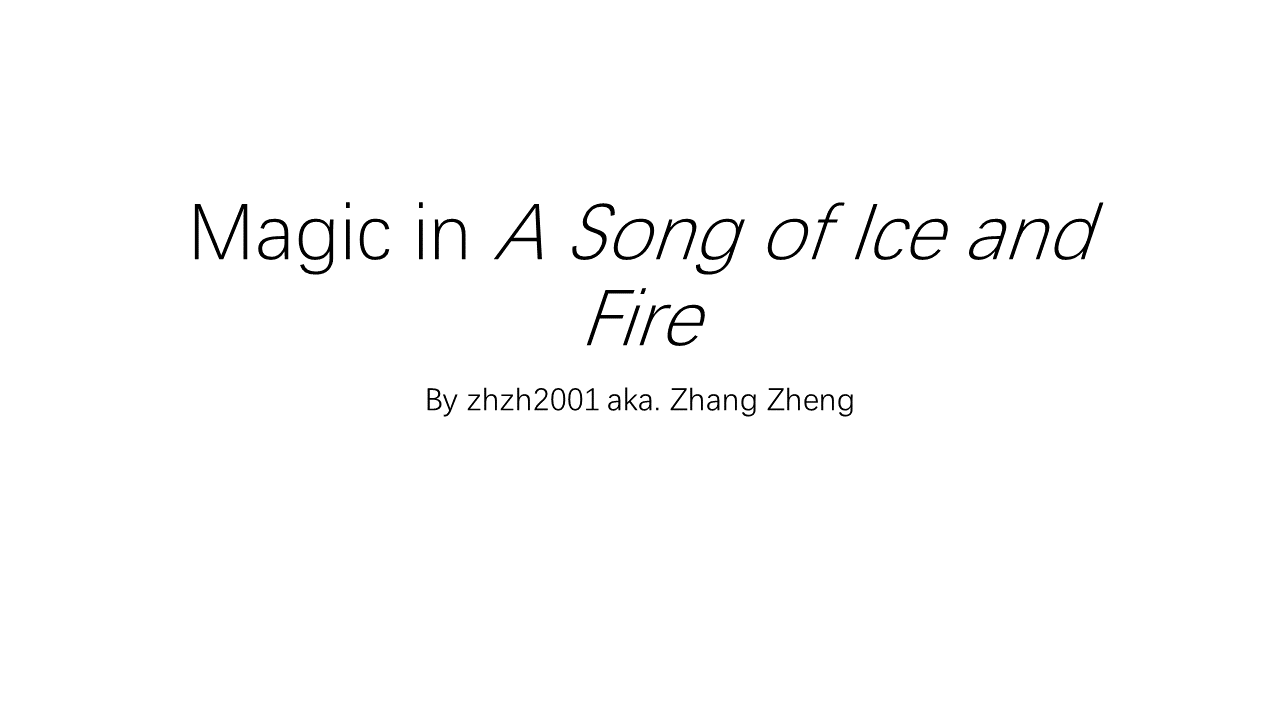
Good morning, my fellow students. I’m Zhang Zheng from Group 1. I’m delighted to share with you about Magic in A Song of Ice and Fire. There is a quiz at the end of the presentation. Answer correctly, and you will be rewarded an e-book of asoiaf. Let’s begin.
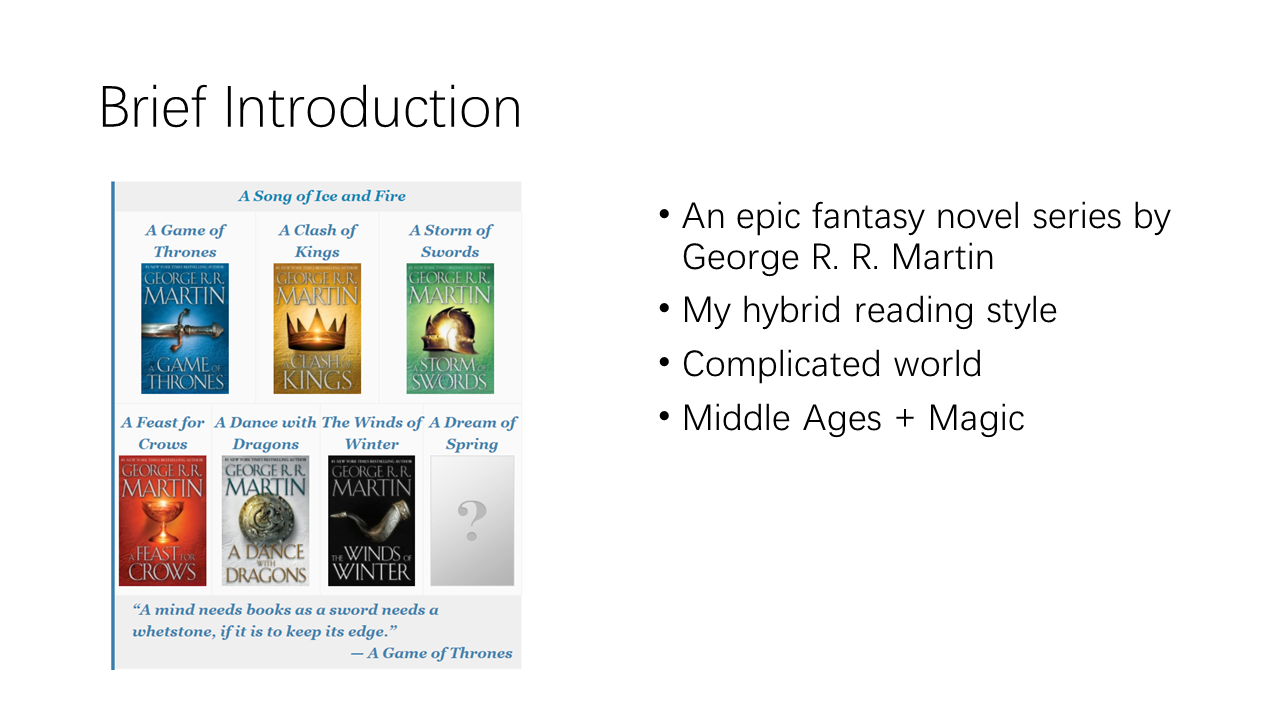
First, asoiaf is an epic fantasy novel series by George R. R. Martin. He’s from the US. I read the novel, some chapters in English and others in Chinese translation to read faster. The world is really complicated. I only mention a small fraction of it. The novel was set in the Middle Ages. You can see castles, lords, knights, swords, etc. along with magic elements. Such as fiery dragons and icy Others.
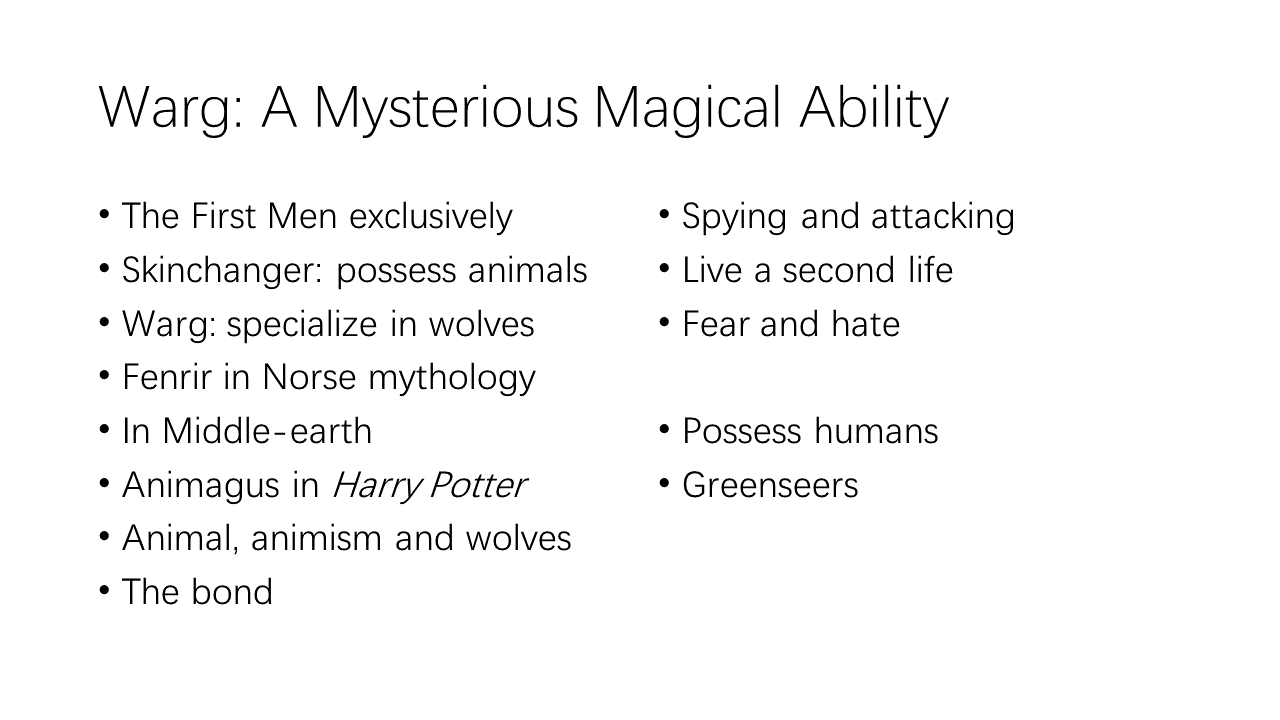
But my favorite magic is warg. Only the First Men living in the North could master it. Skinchangers could enter the minds of animals, use their senses and control or manipulate them. Wargs specialize in wolves. The term warg has a long history. It refers to Fenrir, a monstrous wolf in Norse mythology. Here Norse means Northern Europe. J. R. R. Tolkien used the meaning in the Hobbit. The Orcs ride on wargs. Skinchangers were also mentioned. They could transform between a human and a bear. Similar to Animagus in Harry Potter, but different from asoiaf. Why do I prefer warg? I’m fond of animals, and willing to believe everything has its spirit. That is called animism. Wolves’ teamwork and toughness especially attracts me. Warg also makes animals more than pets. They form close bonds with wargs.
As a warg, you could spy and attack in animal’s skin. That’s cool, efficient and wild. When your human body dies, you could live on inside the animal. That’s particularly useful. You could die anytime even if you are a main character. Ordinary people fear and hate wargs.
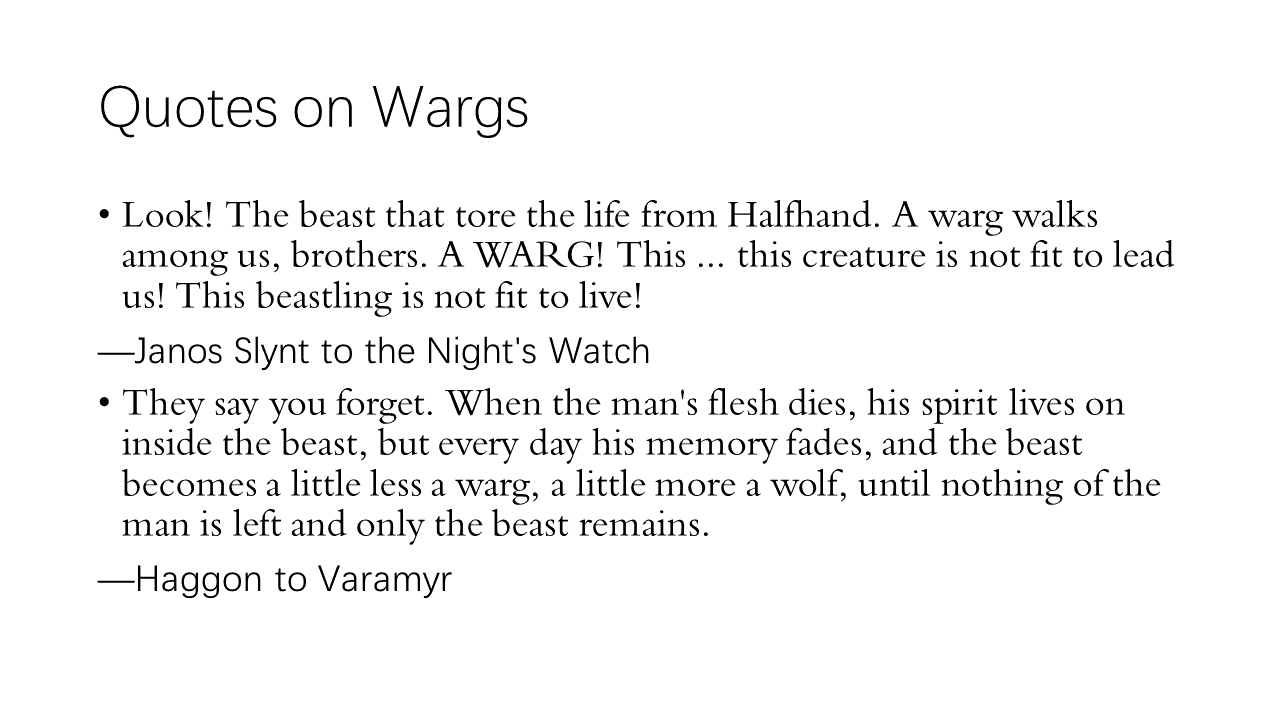
Let’s have a taste of the novel. Janos Slynt used warg as an excuse to undermine Jon. This reflects traditional view on wargs. The next quote demonstrates the second life.
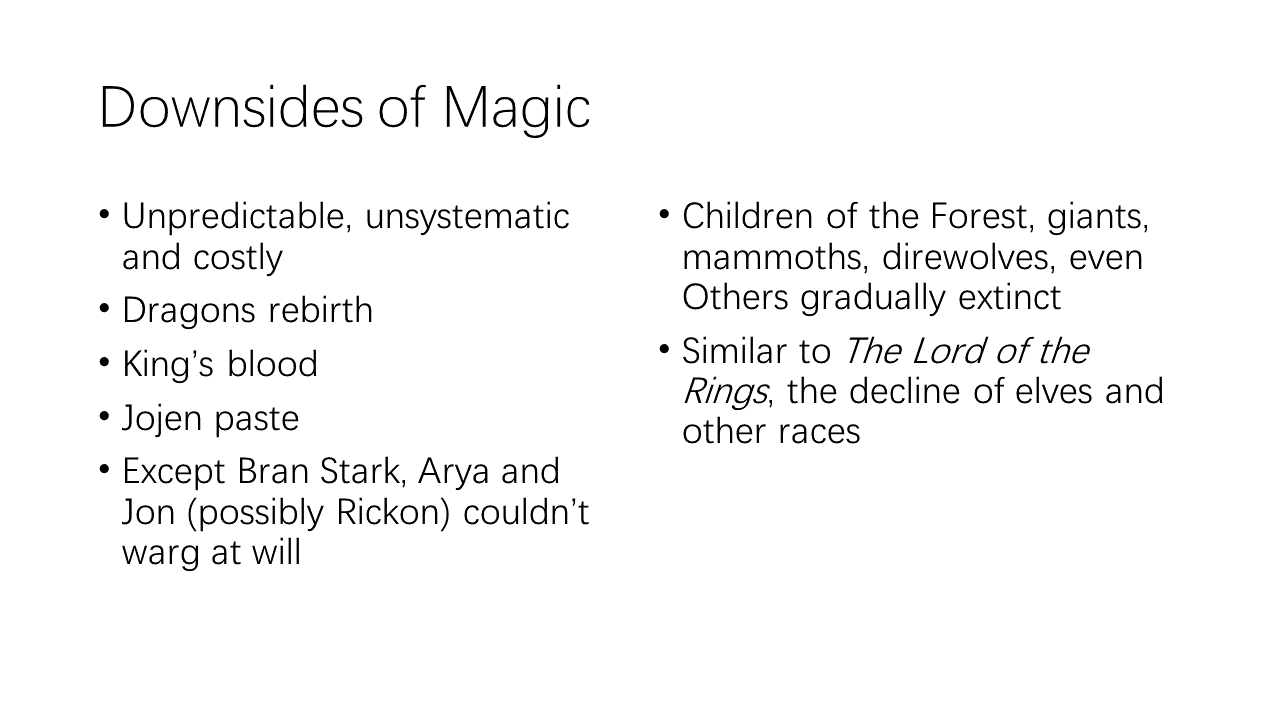
However, magic isn’t always good. Unlike Harry Potter, magic in asoiaf is unpredictable, unsystematic and costly. Only death can pay for life. To wake the stone dragons, Daenerys sacrificed her husband and her unborn son. The Red Women needed king’s blood to bring dragons or dead people back to life. Jojen paste is a fan theory. It is believed that Bran ate his friend Jojen’s flesh to become a greenseer. Though Bran didn’t know the truth.
What’s more, magic fades. Magic creatures, from the Children and giants to mammoths and direwolves, even the Others gradually declined. This theme is similar to The Lord of the Rings, where elves had to go to the Undying Lands in the West. It’s bitter.

Now it’s quiz time. The question is easy if you listen carefully. Did the Starks belong to the First Men? Why? Who’d like to win the prize?

Thanks for listening. Good luck and have fun.
Bonus: The presentation above is actually the second version, here you can find the original presentation.